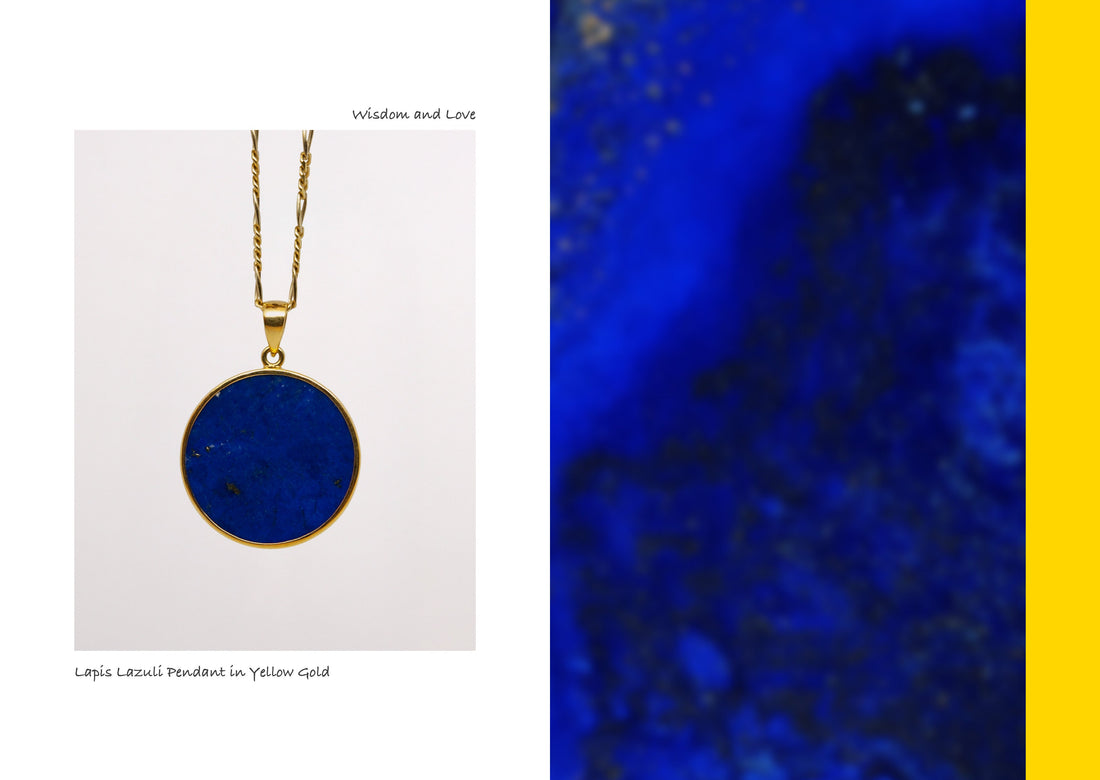
3 Tips for buying Lapis Lazuli Gold Jewelry
Share
Tips for Choosing the Perfect Lapis Lazuli Earrings or Pendant
Lapis Lazuli: A Blue Stone
With its deep royal blue color and long history of spiritual significance, Lapis Lazuli jewelry has been admired for thousands of years. Believed to enhance wisdom and inner strength, this captivating gemstone remains one of the most sought-after stones in fine jewelry today.
The name Lapis Lazuli comes from the Latin word for “stone” and the Persian word for “blue” — making it, quite literally, the “blue stone.” Often referred to simply as Lapis, this gem has been used for centuries in various forms: from carved sculptures to Lapis Lazuli earrings, necklaces, rings, and pendants.
When choosing a piece of Lapis Lazuli gold jewelry, it’s important to understand the characteristics that determine its quality and value.
What Is Lapis Lazuli?
The Lapis Lazuli stone is not particularly hard, ranking 5 to 5.5 on the Mohs scale. Its finest specimens come primarily from Afghanistan and the Middle East. Unlike single-mineral gems, Lapis Lazuli is composed of multiple minerals, giving it a distinctive beauty.
- Lazurite – Provides the vivid blue color that makes Lapis so unique.
- Calcite – A white mineral that may appear as streaks or thin lines.
- Pyrite – A silver- or gold-colored mineral that creates the sparkling flecks often seen on Lapis.
The most desirable Lapis Lazuli gold jewelry features stones with a rich, uniform blue color and only minimal inclusions. Finding a piece completely free of calcite or pyrite is nearly impossible — and often unnecessary. Many jewelry lovers treasure the golden pyrite flecks or delicate white calcite streaks, as these natural inclusions emphasize the gemstone’s authenticity and beauty. Explore our Lapis Lazuli Earrings Gold for a stunning example of this timeless charm.
Don’t Be Fooled: Spotting Genuine Lapis Lazuli
While Lapis Lazuli jewelry is not rare, high-quality pieces can be hard to find. Unfortunately, imitations and treated stones are often sold as genuine.
Imitation Lapis Lazuli
Some sellers use colored glass or plastics to mimic the dark blue appearance of natural Lapis. These fakes may look convincing at first glance but lack the depth, texture, and energy of the authentic stone.
If you are uncertain about your Lapis Lazuli earrings or pendants, consult a trusted jeweler or gemologist for verification. Doing proper research is essential before making an investment.
Enhanced Lapis Lazuli
Though Lapis Lazuli is usually untreated, some stones undergo enhancement processes such as dyeing, waxing, or resin impregnation. These methods may temporarily improve color but can compromise the stone’s stability and fade over time. Always ask for transparency when buying Lapis Lazuli earrings gold or any high-end gemstone jewelry.
Know What You Like: Choosing Your Perfect Style
When selecting Lapis Lazuli gold jewelry, simplicity often brings out the stone’s natural charm. Classic cuts such as round or oval cabochons are most common, showcasing the vivid blue tones and unique inclusions beautifully.
Lapis Lazuli is often paired with other gemstones — such as malachite, turquoise, or even diamonds — creating meaningful jewelry combinations that enhance both design and symbolism. Discover our unique detachable Lapis Lazuli Earrings Gold, thoughtfully designed to be adjusted according to your personal style.

